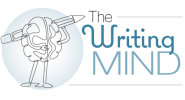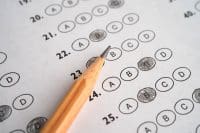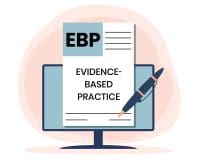New Year’s is a popular time for resolutions—a time to start anew. Perhaps you’ve been thinking about writing for publication but are struggling with inertia. Or maybe you’ve been published but haven’t carved out the time to make that happen more often. One way to move forward is to cultivate the habit of writing. Why? Habits save the brain effort, writes Charles Duhigg in the classic book The Power of Habit: Why We Do What We Do in Life and Business. If we can lessen the effort it takes us to write, we can become more productive.
Here are a few tips from experts on habits that might be helpful in creating your own writing habit.
Apply the 20-second rule
When Shawn Achor, author of The Happiness Advantage, wanted to start daily guitar practice, at first he was stymied—nothing seemed to work to get him motivated. His guitar remained in the closet, a mere 20 seconds away from his taking it out and using it. Then he hit on an innovative solution: Move the guitar to the center of his apartment. This one change resulted in Achor regularly practicing each day. The lesson is that simple steps can help reduce the energy needed to engage in a desired habit.
So how does this apply to writing? Think about simple barriers that block the way to your writing endeavors. For example, if you have to drag out your computer or retrieve your notes from a filing cabinet in another room every time you want to write, you’re less likely to write. Instead, dedicate a space for writing and keep everything organized in that space. The goal is to make it as easy as possible.
Understand cue-routine-reward
Duhigg writes that a habit consists of a cue (a trigger that automatically tells the brain to do something), routine (the action, to be done, which can be physical, mental, or emotional), and reward (provides positive reinforcement, motivating the brain to continue the habit).
When it comes to writing, you could set your calendar to alert you at certain times of the week that it’s time to write. Once you’re done writing, you can reward yourself with something meaningful to you, such as spending time outside or texting a good friend.
Consider a four-stage process
James Clear, author of Atomic Habits, outlines four stages for developing a habit: noticing, wanting, doing, and liking. (You can watch a short video about these stages here.)
Noticing: People think they need motivation to do something like write, but instead they need clarity, in the form of a specific plan. It can be hard to develop that plan, so Clear suggests engaging in a “failure premortem,” in which you imagine yourself 6 months from now when you’ve failed to achieve your goal. Then “tell the story” of why you failed, noticing things such as challenges. This helps you anticipate barriers and develop “if, then” aspects of the plan. For instance, if you miss your regular writing appointment, how will you reschedule?
Wanting: This stage is similar to the 20-second rule—adjust your environment to make it easier to engage in the desired behavior.
Doing: The bottom line is to start doing the activity. Instead of focusing so much on the ultimate goal, focus on getting started.
Liking: Clear says we repeat behaviors because we enjoy them, so it’s best to bring rewards into the present moment. He cites the example of a wall calendar that you mark each day you accomplish something related to your goal. Clear says that you’ll ultimately start a “chain” that you’re less likely to break. You might not be able to mark every day on the calendar that you wrote, but you should derive satisfaction from seeing your progress.
Becoming a writer
Clear says that changing your habits can change your identity, becoming who you want to be. For example, the goal should not be to write an article but to become a writer, and the way to become a writer is to write. He says, “Every time you write you are being a writer.” Wise words to keep in mind as you move forward with your writing goals.
References
Achor S. The Happiness Advantage: The Seven Principles of Positive Psychology That Fuel Success and Performance at Work. London, England: Virgin Books; 2011.
Clear J. Atomic Habits: An Easy & Proven Way to Build Good Habits & Break Bad Ones. New York, NY: Avery; 2018.
Duhigg C. The Power of Habit: Why We Do What We Do in Life and Business. New York, NY: Random House; 2012.
Saver C. Anatomy of writing. In: Saver C. Anatomy of Writing for Publication for Nurses. 4th ed.Indianapolis, IN: Sigma Theta Tau International; 2021;3-20.


I’ve been a full-time professional nurse writer and editor for many years, and that doesn’t count the writing I did as I fulfilled my nursing roles in clinical, research, education, and management. My passion is helping nurses share their expertise through the written word, including, but not limited to, publication. Writing can be scary and intimidating. I hope to make it less so and to help you develop your writing skills the same way you’ve developed your nursing skills.
Whether you’re considering your first or your 50th publication, want to contribute to your organization’s newsletter, or crave to be a better communicator online and in print, I hope you’ll find what I write helpful. The nurse publishing colleagues I’ve learned from over the years (many of whom are contributors to my book) may not be listed by name, but I’m grateful for their willingness to share. In that spirit, I’m looking forward to sharing with you! If you have feedback, feel free to email me at csaver57@gmail.com.




















2 Comments. Leave new
I am interested in writing health articles. How do I get started? Please advise. Respectfully. Olga Ledford, MSN, RN-BC
Hello Olga — Thanks for posting a comment. If you are interested in writing for American Nurse Journal please see our author guidelines at https://www.myamericannurse.com/author-guidelines/ for more information!